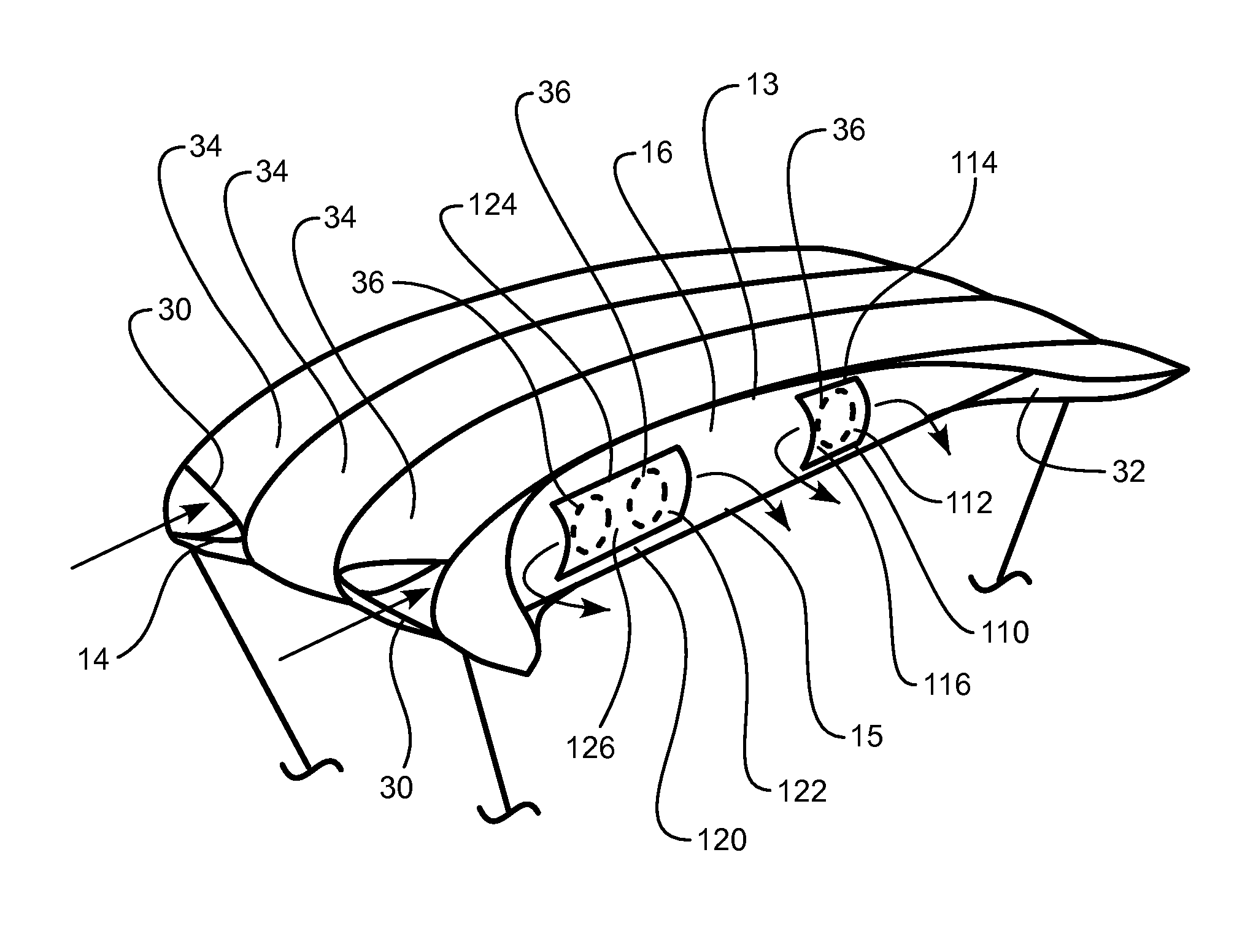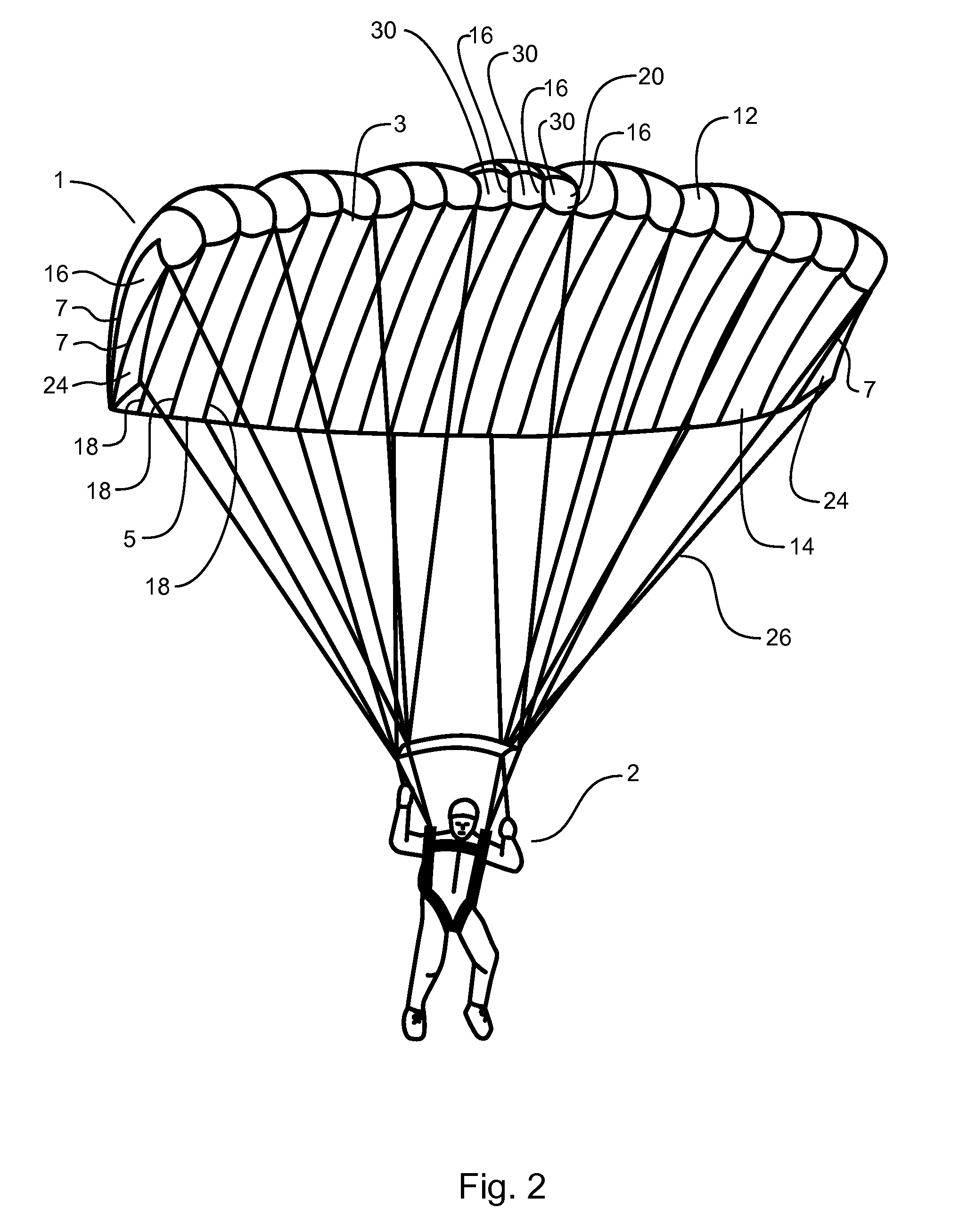Parachute with one-way valve device
a technology of one-way valve and parachute, which is applied in the field of parachutes and paragliders, can solve the problems of loss of parachute rigidity, and further shrinkage in size, so as to reduce stall speed, increase performance characteristics, and increase canopy area
- Summary
- Abstract
- Description
- Claims
- Application Information
AI Technical Summary
Benefits of technology
Problems solved by technology
Method used
Image
Examples
Embodiment Construction
[0025]The drawings illustrate an invention that enables a parachute to retain its rigidity and shape when flying in turbulent air or at low speeds.
[0026]FIG. 1 shows one embodiment of the present invention 1 employed as a parachute and deployed and inflated in flight. The parachute 1 is comprised of a an upper skin 12 of a generally rectangular shape and a lower skin 14 of substantially the same configuration each having a leading edge 3 a trailing edge 5 and a pair of generally opposing lateral edges 7. The lower skin 14 is disposed beneath and joined to the upper skin 12 at the trailing edge 5, the leading edge 3 and by a plurality of elongated rib members 16. The joining of the rib members 16 in the present embodiment can be seen in FIG. 1 as parallel seam lines 18. Load bearing ribs 20 bear and distribute the weight of the payload such as an operator 2, suspended beneath the parachute 1. Generally, suspension lines 26 connect to, or proximately to a load bearing rib 20 that in t...
PUM
 Login to View More
Login to View More Abstract
Description
Claims
Application Information
 Login to View More
Login to View More - R&D
- Intellectual Property
- Life Sciences
- Materials
- Tech Scout
- Unparalleled Data Quality
- Higher Quality Content
- 60% Fewer Hallucinations
Browse by: Latest US Patents, China's latest patents, Technical Efficacy Thesaurus, Application Domain, Technology Topic, Popular Technical Reports.
© 2025 PatSnap. All rights reserved.Legal|Privacy policy|Modern Slavery Act Transparency Statement|Sitemap|About US| Contact US: help@patsnap.com



